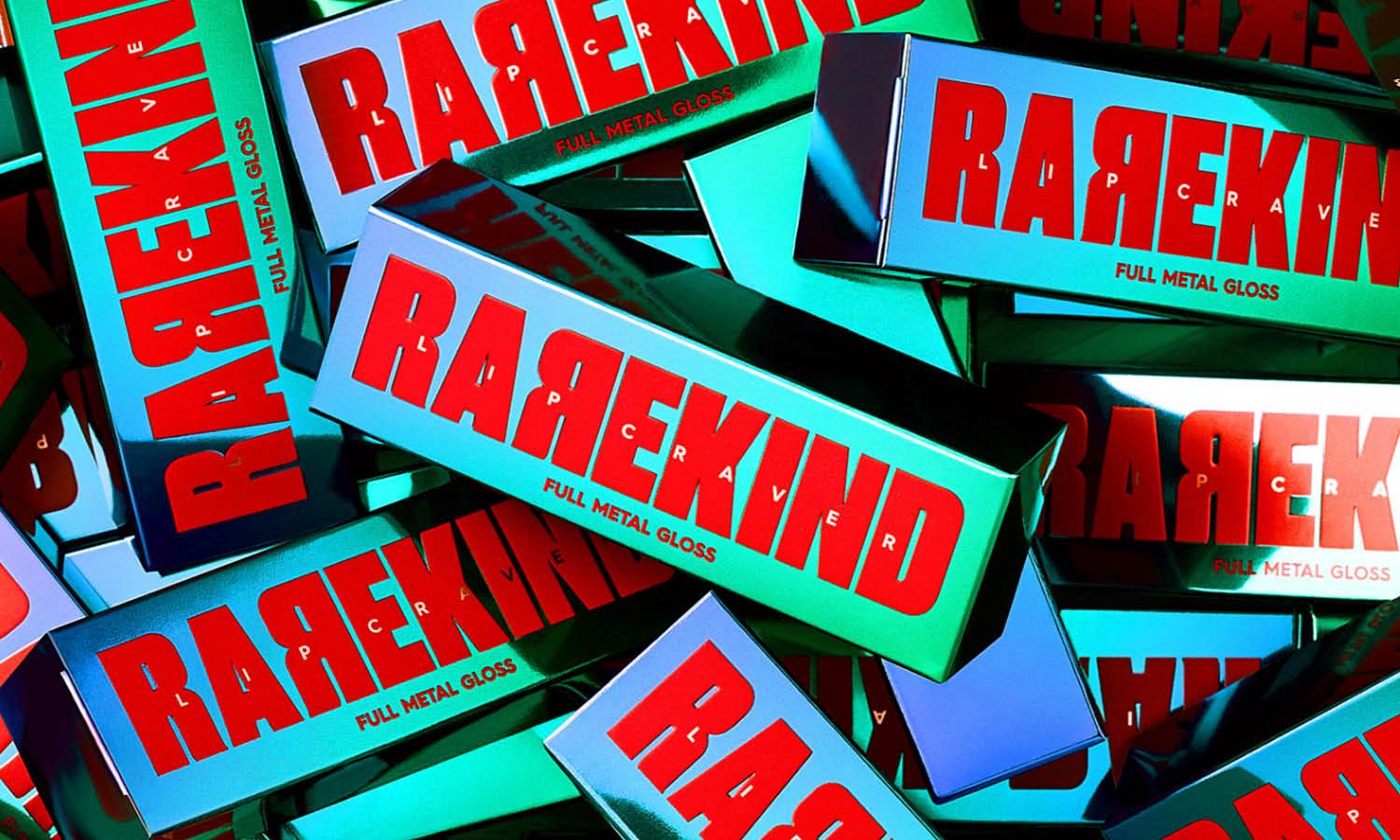Can You Sue If Your Logo Design Is Not Trademarked?

Understanding the intersection of logo design and trademark law is crucial for businesses and designers alike. A logo serves as a visual cornerstone of a brand's identity, encapsulating its essence in a recognizable symbol. When it comes to protecting this vital asset, trademark registration plays a key role, affording the logo legal protection against unauthorized use and imitation. However, the realm of intellectual property rights is complex, especially when a logo isn't trademarked. This raises significant questions about the extent of legal recourse available for unregistered designs.
The issue at hand is whether one can sue if their logo design, which serves as a unique identifier to the public and holds potential commercial value, is not trademarked. Navigating through this scenario requires an understanding of the differences between copyright and trademark protections, common law rights, and the specific challenges faced when a logo lacks formal registration. This article aims to explore these intricate details, providing a comprehensive guide on how businesses can protect their creative works and what legal actions are available if disputes arise.
Understanding Copyright vs. Trademark Protection
When it comes to protecting intellectual property in the realm of logo design, understanding the distinctions between copyright and trademark protections is essential. Copyright automatically safeguards the artistic aspects of a logo, such as its unique graphic design or illustration, immediately upon creation. This means that the visual expression of ideas is protected from reproduction, distribution, and display without permission. However, copyright does not prevent others from creating a logo with similar conceptual elements or branding purposes.
In contrast, trademark protection focuses specifically on the aspects of a logo that distinguish a brand’s goods or services from those of others. Trademarking a logo ensures that it is associated exclusively with the provider of the product or service it represents, preventing others from using a confusingly similar mark in a way that could deceive consumers. This is particularly vital in competitive markets where brand identity can significantly influence consumer choices.
To secure trademark protection, a logo must be registered with the appropriate governmental body, which provides legal grounds to enforce the trademark. This includes preventing unauthorized use of the logo on competing or related products and services. The protection granted by a trademark is typically stronger and more extensive than that of copyright, covering aspects like the use of similar logos in the same industry or market.
The Importance of Trademarking Your Logo
Trademarking a logo is an indispensable step for any business aiming to secure its brand identity and market position. A trademarked logo acts as a legal safeguard, ensuring that only the owner has the right to use it in commerce within the specified context. This exclusivity is crucial for maintaining the integrity of a brand and for protecting consumers from confusion or deception by competing entities.
The process of trademark registration involves a thorough examination by the trademark office to ensure that the logo is distinctive enough to qualify for protection and does not infringe on existing trademarks. Once registered, the logo owner gains the ability to enforce rights in court against others who may use a similar mark in a way that could confuse customers. Moreover, a trademark can become a valuable asset over time, potentially increasing in value as the brand grows in recognition and trust.
Furthermore, having a trademarked logo can deter others from using similar symbols by demonstrating that the logo is legally protected and not available for unauthorized use. It also simplifies the process of expanding a business internationally, as registered trademarks can often be the basis for foreign registrations, facilitating global brand protection. Therefore, investing in trademark registration is not only about legal defense but also about enhancing the marketability and longevity of a brand.
Legal Protection for Unregistered Trademarks
While registering a trademark provides the most robust legal protection for a logo, unregistered trademarks can still receive limited protection under common law. Common law rights are established through actual use of a logo in commerce, rather than through registration. These rights are inherently based on the principle that the first to use a trademark in a specific geographic area for commercial purposes has the right to prevent others from using a confusingly similar mark in the same area.
However, the scope of protection for unregistered trademarks is generally narrower compared to registered trademarks. The owner of an unregistered trademark must prove that the mark has acquired distinctiveness and is associated with their goods or services by the relevant consuming public. This often involves demonstrating continuous use, which can be time-consuming and costly.
The enforcement of unregistered trademark rights usually occurs through state courts under the tort of passing off, which protects the goodwill of a trader from misrepresentation. To succeed in a passing off claim, the plaintiff must prove that there is a misrepresentation that has led to confusion among consumers, and as a result, the plaintiff has suffered damage.
Owners of unregistered trademarks may also seek protection under the Lanham Act if the infringement constitutes false designation of origin or false advertising, provided that the use of the logo affects interstate or international commerce. Therefore, while unregistered trademarks are protected, navigating these legal waters requires a careful approach.

Suing for Infringement Without a Trademark
Suing for infringement without a registered trademark involves navigating the complexities of intellectual property laws that protect unregistered marks. Owners of unregistered trademarks can initiate a lawsuit based on the principles of "passing off," which prevents other businesses from misleading consumers into thinking their products or services are affiliated with or endorsed by another brand.
To sue for infringement without a registered trademark, the plaintiff must demonstrate that they have established a reputation or goodwill under the logo or design in question. This involves showing that the logo has been used extensively and is recognized by consumers as a symbol that identifies the source of the goods or services. The plaintiff must also prove that the defendant’s use of a similar logo is likely to cause confusion among consumers, misleading them about the origin of the goods or services.
This legal action requires substantial evidence of the logo’s presence in the market, its association with specific goods or services, and the likelihood of confusion or deception caused by the unauthorized use. Successful litigation can result in injunctions stopping the infringing use, monetary damages, and, in some cases, orders for the destruction of infringing items.
However, without the clear rights provided by a registered trademark, these cases can be more challenging to prove and costly to litigate. They often hinge on the specifics of how well-known the unregistered mark is and the direct impact of the alleged infringement on the original owner's business. Therefore, while it is possible to sue for infringement without a trademark, the complexity and uncertainty of these cases often make trademark registration a more secure choice for logo protection.
Comparative Analysis of Registered vs. Unregistered Logo Protection
The protection afforded to a logo significantly varies depending on whether it is registered as a trademark. Registered trademarks offer comprehensive legal protection across the entire country, providing clear evidence of ownership and the date of first use. This registration acts as a public declaration of the owner's claim to the logo, significantly simplifying the enforcement process against potential infringers. With a registered trademark, the owner has the exclusive right to use the logo in connection with the goods or services listed in the registration, and can also bring lawsuits in federal court, potentially obtaining monetary damages and other legal remedies.
In contrast, unregistered trademarks are protected under common law rights that are generally limited to the geographic area where the logo has been actively used in commerce. The protection is only extended to the scope of actual use, meaning the influence and enforceability might not reach beyond the immediate region of operation. Enforcing an unregistered trademark requires proving that the logo has acquired secondary meaning, which indicates that consumers associate the logo specifically with the products or services provided under it. This can be a challenging and evidence-intensive process.
Moreover, owners of unregistered trademarks are not entitled to certain statutory damages and benefits available to owners of registered trademarks, making it harder and potentially more costly to take legal action against infringement. Therefore, while both registered and unregistered logos have legal protections, registered trademarks offer more robust, extensive, and easier-to-enforce rights.
Collecting Evidence of Prior Use
For owners of unregistered trademarks, collecting evidence of prior use is crucial in establishing and defending their rights to a logo. Documenting the first and continuous use of a logo in commerce is essential to prove ownership and the extent of trademark rights under common law. This evidence can be critical in legal disputes where the date of first use determines priority over a similar mark used by others.
To effectively collect this evidence, business owners should maintain comprehensive records of every instance the logo is used in public. This includes saving copies of marketing materials, advertisements, sales receipts, product packaging, and any online use that displays the logo. It is also beneficial to record the geographic locations where the logo has been used, as common law rights are geographically limited.
Photographic evidence showing the logo on products, in stores, or at trade shows can also be persuasive. Additionally, gathering affidavits from customers or business partners who can attest to the logo’s usage over time can strengthen the claim. In the digital age, maintaining digital timestamps and metadata associated with the creation and modification of the logo files can further substantiate the timeline of use.
Collecting and organizing this evidence methodically can greatly assist in demonstrating the logo’s history and the owner’s long-standing reliance on the mark for business identity. This preparation proves invaluable not only in asserting common law trademark rights but also in potentially converting these rights into a registered trademark in the future.
Understanding 'Passing Off' and Its Relevance
"Passing off" is a legal doctrine used to enforce unregistered trademark rights and protect the goodwill associated with a brand, particularly relevant to the fields of logo design and trademark. This common law tort prevents businesses from misrepresenting their products or services as those of another, thereby misleading consumers. The essence of passing off is to uphold the reputation a business has established under its mark and prevent others from benefiting unfairly from that established goodwill.
To succeed in a passing off claim, three key elements must be proven: the existence of goodwill attached to the goods or services, misrepresentation by the defendant leading to consumer confusion, and damage to the plaintiff’s goodwill or potential loss of sales. For logo designers and brand owners, this means that if another entity uses a similar logo that could confuse the public into thinking there is an association with their brand, they can potentially bring a passing off action.
This tort is particularly important for businesses that have not registered their trademarks. It provides a form of protection by focusing on the business's reputation rather than the registration status of a trademark. Although proving passing off can be complex and evidence-intensive, it remains a critical legal tool for defending a brand's identity in the marketplace without the need for formal trademark registration.

Geographical Limitations of Unregistered Trademarks
Unregistered trademarks inherently carry geographical limitations that can significantly impact their protection and enforcement. Under common law, the rights to an unregistered trademark are limited to the specific areas where the mark has been actively used and where it has established a customer base. This means that the protection of an unregistered logo or brand name does not extend nationwide but is confined to the regions where consumers can associate the mark with the goods or services provided under it.
For businesses and designers, this limitation means that if a logo is used in commerce in one city or region, the rights to prevent others from using a confusingly similar logo apply only within that locality. If another business uses a similar mark in a different geographic area where the original mark has not established presence or recognition, the original user may find it challenging to enforce their rights in that new region.
This geographic restriction can pose significant challenges, especially for businesses looking to expand beyond their initial market or those with a strong online presence that transcends physical boundaries. The limitation emphasizes the importance of registering a trademark if broader, national protection is desired. Registration with the appropriate governmental body provides legal recognition and rights enforcement across the entire country, alleviating the constraints posed by the geographical limitations of unregistered trademarks.
The Role of Consumer Confusion in Logo Design Disputes
Consumer confusion plays a pivotal role in logo design disputes, particularly in cases involving trademark infringement or passing off. This confusion occurs when consumers mistakenly believe that there is a connection between two different brands due to similarities in their logos or other branding elements. The legal framework surrounding trademarks is designed to prevent such confusion, protecting the consumer from deception and the brand from dilution.
In trademark law, the likelihood of confusion is a key factor courts consider when determining whether one logo infringes upon another’s trademark rights. Factors contributing to this include the similarity of the logos, the similarity of the products or services they represent, the similarity of the channels of trade and target consumers, and the distinctiveness of the original mark. If a substantial number of consumers are likely to be misled about the origin of goods or services because of the logo used, the party with the prior use may have a strong case for infringement.
To minimize risks, designers and businesses should conduct thorough market research and consult trademark databases to ensure their logo is distinctively different from existing marks in the industry. Ensuring a unique and distinctive logo design not only enhances brand recognition but also reduces legal risks associated with consumer confusion.
The Process of Registering a Logo as a Trademark
Registering a logo as a trademark is a strategic step to protect a brand’s identity and is a process that involves several key stages. Initially, the business or designer should conduct a comprehensive trademark search to ensure that the logo, or a similar one, has not already been registered or is not in use. This search can be done through national trademark offices or by consulting with legal professionals specializing in intellectual property.
Once the uniqueness of the logo is confirmed, the application process can begin. This typically involves filling out a detailed form providing specifics about the logo and the goods or services it represents. It is crucial to accurately define the class of goods or services as this will determine the scope of trademark protection.
The application is then submitted to the relevant trademark office, where it undergoes examination. The office assesses whether the logo meets the legal criteria for trademark protection, including distinctiveness and non-deceptiveness. If the application is initially approved, the logo is published in a trademark journal or registry, allowing for any objections or oppositions to be filed by third parties.
If there are no objections, or if any objections are successfully overcome, the trademark registration is granted. The owner of the trademark will receive a certificate of registration and can use the registered trademark symbol, ®, with their logo, indicating that it is a legally registered trademark. This registration provides legal protection against unauthorized use of the logo nationwide, and potentially, international protection if registered in other jurisdictions.
Conclusion
Protecting your logo through trademarking is essential for safeguarding your brand's identity and market presence. A well-designed logo, distinct and memorable, becomes more than just a visual mark; it embodies your business's ethos and promises to your customers. Registering your logo as a trademark amplifies this identity, ensuring legal exclusivity and building trust with your audience. By understanding the nuances of trademark law, from the registration process to handling potential disputes, businesses can prevent costly infringements and maintain their competitive edge. Prioritize these practices to enhance the longevity and integrity of your brand.
Let Us Know What You Think!
Every information you read here are written and curated by Kreafolk's team, carefully pieced together with our creative community in mind. Did you enjoy our contents? Leave a comment below and share your thoughts. Cheers to more creative articles and inspirations!
















Leave a Comment